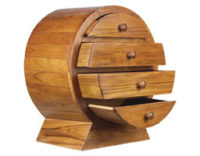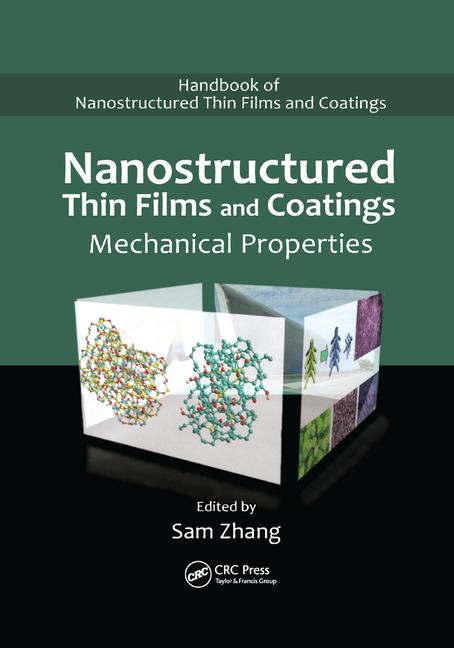
In 2007, the United States paint market was approximately 1.50 billion gallons: 1.0 billion gallons was waterborne and 500 million gallons solventborne. The Architectural (Decorative) market is approximately 900 million gallons of this volume, and is dominated by waterborne coatings. Upcoming VOC regulations in the United States, OTC (Ozone Transport Commission) in the East Coast states and SCAQMD (South Coast Air Quality Management District) in California continue to further tighten the VOC limits for various coating types especially architectural and industrial coatings. These regulations have necessitated a search for alternate VOC-compliant waterborne technologies, which perform like solventborne coatings.
Today, latex emulsions and polyurethane dispersions dominate waterborne coatings; whereas solventborne coatings are dominated by alkyds, alkyd acrylic copolymers, urethanes and oil-modified urethanes. These lower VOC limits are forcing coating formulators to high-solids, water-reducible alkyds and latex emulsion technologies. Each of these technologies has challenges in meeting the performance and application properties of solventborne coatings.
Challenges
The recent record-high pricing of petroleum and oil-based raw materials, as well as uncertain availability due to increased demand overseas has made complete dependency on synthetic raw materials questionable. There is a strong need to find different materials preferably based on renewable resource. Furthermore the changing and tightening VOC regulations set forth by OTC and SCAQMD will necessitate changes in architectural and industrial coatings. The waterborne technologies have a major challenge in achieving some of the key performance attributes of solventborne coatings. Therefore there is a strong need for a polymeric materials technology that can deliver solventborne-like performance in a VOC-compliant waterborne system.This paper presents a novel approach to create a low-VOC hybrid emulsion by utilizing the concepts of sustainability and green (naturally occurring resource materials) to impart value and performance at lower VOCs for industrial and architectural coatings applications. Recycled polyester and soybean oil were used along with commonly available raw materials to create a hybrid polymer technology, which can be processed and formulated into value-added, VOC-compliant, performance coatings.
Goal
The goal was to develop water-based material technology by incorporating the concepts of “Sustainability” and “Green” for formulating into high-performance VOC-compliant coatings that perform like the current solvent-based oil paints with high gloss, excellent adhesion, moisture resistance and shelf stability. The technology was targeted as a protective finish over metal substrates and as an adhesion modifier and gloss enhancer in combination with latex emulsions for architectural coatings.Product Criteria
The following features are desired in the protective coating:a) VOC< 100 g/L
b) Dry Time:
To touch: < 45 min
Tack free: < 2 h
Dry hard: < 4 h
c) Adhesion to metal and wood:
Tape 5B
Patti > 3000 psi
d) 60° Gloss: >80
e) Early moisture resistance (Mist Box): pass 2 - 4 h
f) Humidity resistance: pass 500 h
g) Flexibility by conical bend: Pass 1/8”
h) Abrasion resistance: Taber CS17, 1000 cycles, <250 mg
i) Corrosion weathering: pass (3 cycles) 1000 h
j) Salt spray pass 500 h
k) QUV-A 500 h, gloss retention >80 %, change in Delta E < 5
l) Shelf stability: > 3 yrs
m) Compatible with standard latex emulsions
n) Compatible with standard paint raw materials
Technology Features
The following features were desired for the polymer:a) Ambient curing with oxidative crosslinking
b) Hard and soft segments to balance hardness and flexibility
c) Resistant to hydrolysis
d) Material needs to be water resistant but water-based
e) Balance of hydrophobic and hydrophilic groups
f) Surfactant-free technology
g) Organic solvent content < 5%
h) Use soybean oil as a diluent
i) Polymer processing: Reproducible consistently using standard processing equipment
j) Cost/performance competitive with alternate technologies

Polymeric Materials Technology
The innovation here was in incorporating different value-added functionalities through concepts of sustainability and renewable materials to create liquid crystalline-based bio-hybrid dispersion technology.PET (polyethylene terephthalate) is the plastic commonly used in beverage bottles and typically ends up in landfills after its use. The chemistry to develop the novel materials technology utilizes PET as a starting material primarily because it is a low-cost and readily available raw material and secondarily because it is less prone to hydrolysis due to the anchimetric effect from terephthalic acid units. Polyethylene terephthalate (PET) is comprised of repeating units of ethylene glycol (EG) and terephthalic acid (TPA) connected by ester linkages. Each repeating unit of PET has a weight average molecular weight of 192. By controlled scission, it is possible to reduce the chain length of PET molecules. The chemistry of PET is such that equilibrium exists between PET, water, EG, TPA and soya fatty acid, which are used to cleave the PET. This equilibrium makes it possible to substantially reverse the polymerization and depolymerize PET with acid-functional soya fatty acid. This is accomplished through acidolysis of the ester linkage and exchange by the soya fatty acid with the terephthalic acid unit of the PET molecules. The exchange continues to occur until a new equilibrium is established between PET, shorter chain PET, shorter chain length PET substituted with soya fatty acid, soya fatty acid and terephthalic acid. Subsequent to acidolysis, the remaining PET fragments and products in equilibrium therewith are predominantly acid-functional. These can be reacted with polyols to form soy-terminated PET containing liquid polyester. It was observed that under polarized light the samples showed birefrigerence indicating the presence of liquid crystals.
The following steps were carried out to make the hybrid dispersion.
1. A controlled digestion of PET with soya fatty acid with the resulting fatty acid-terminated PET units converted into liquid soy-functional PET polyester by reacting with polyols.
2. The soya PET polyester is grafted with hydrophobic and hydrophilic acrylic monomers by graft polymerization in the presence of soybean oil.
3. The anionic pre-polymer was dispersed in water using a triethyl amine under high shear conditions. Under these conditions, the polymer inverts from water-in-oil to oil-in-water.
The resulting novel polymer has liquid crystalline hard PET segments (1-2 microns) that impart hardness, the acrylic functionality for improving dry times and barrier properties. The soya-functional moieties help in film formation, gloss and flexibility. The polymeric reactions are outlined as shown in Figure 1.


Properties
The soya polyester acrylic hybrid dispersion properties are as follows:• NVM: 42 %
• Viscosity: < 2000 cps
• pH: 7.6-8.0
• Dry Tack free: < 30 minutes
• Hydrolytic Stability: > 3 months at 120 ºC
• Morphology: Complex, MW: 30,000-40,000
The performance properties of coatings formulated with the dispersion are outlined in Table 1.


Conclusions
A novel low-VOC polyester hybrid green polymeric technology was designed and developed by applying the principles of sustainability and renewable “green” materials. The platform shows improved performance over the current solventborne technology that could be used solely, or in combination with, latex technologies to boost performance of VOC-compliant coatings.This paper was presented at the American Coatings Conference, Charlotte, NC, 2008.
Acknowledgments
The author thanks the following people at The Sherwin Williams Company for supporting this innovation.
Kent Young for his encouragement and support; Rich Tomko, Jim Marlow, Kim Koglin and Paul Kayima for their creativity in synthesis, development and scale-up of polymer; Dave Klimovich for microscopy and analytical services; and Arun Asarawala, Joe Siy, Paul Masters, Shailesh Shah and Pete Mackulin for creative coatings formulation support. Also we thank The United Soy Bean Board/Smith Bucklin Corporation for supporting the project.




Report Abusive Comment